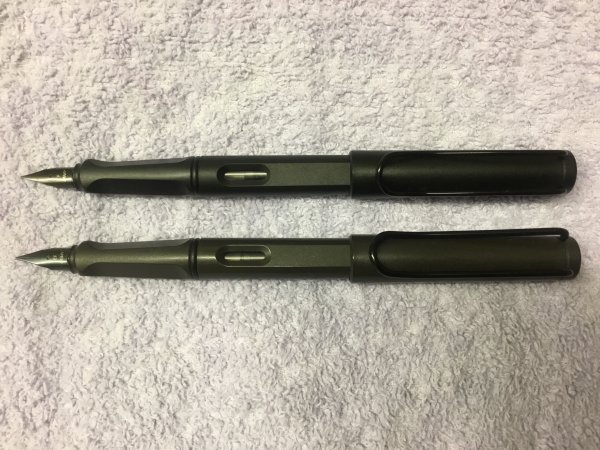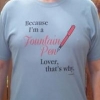Search the Community
Showing results for tags 'charcoal'.
-

Lamy Safari ‘All Black’ and ‘Charcoal’/‘Umbra’.jpeg
Mercian posted a gallery image in FPN Image Albums
From the album: Mercian’s pens
My most recently acquired Lamy Safari - the ‘L44’ ‘All Black’ LE from 2018. Shown below it is the first Safari that I bought - the ‘Charcoal’/‘Umbra’. The difference in appearance between these two pens is a bit more obvious in ‘real life’ than it is on my photograph, but it...
- 0 B
- x
-
- lamy
- lamy safari
- (and 4 more)
-
Have just seen a first generation charcoal Safari being sold on the bay for an inordinate sum but am very interested in the W Germany imprint, which Ive never seen before. Does anyone have anything similar to this imprint on their Savanna, Terracotta and/or Umbra from the time please? Photo attached...
- 13 replies
-
- lamy safari
- charcoal
-
(and 1 more)
Tagged with:
-
Hello guys. I need some suggestions regarding my Lamy Safari Charcoal. I am attaching three pictures. The nib as seen in the picture has developed some sort of stain near the slit of the nib. I have tried soaking the nib in water for a couple of hours as well as washing it some liquid handwash. Noth...
- 3 replies
-
- lamy
- lamy safari
-
(and 1 more)
Tagged with:
-
Another light review, with a few snaps... Preamble (as usual, skip this bit if you don’t like preambles): We have been incredibly fortunate to be able to get our hands on some pretty nice pens over the last few years. The posting of my last review prompted quite a lengthy conversation between “Sh...
-
Robert Oster Signature - Charcoal Robert Oster is an Australian ink maker that is well-known for its unique range of colours. On his website, he describes our shared love quite eloquently: “Robert Oster Signature originates from one of the most famous wine producing regions of the world, the Coona...
- 7 replies
-
- robert oster
- signature
-
(and 2 more)
Tagged with:










